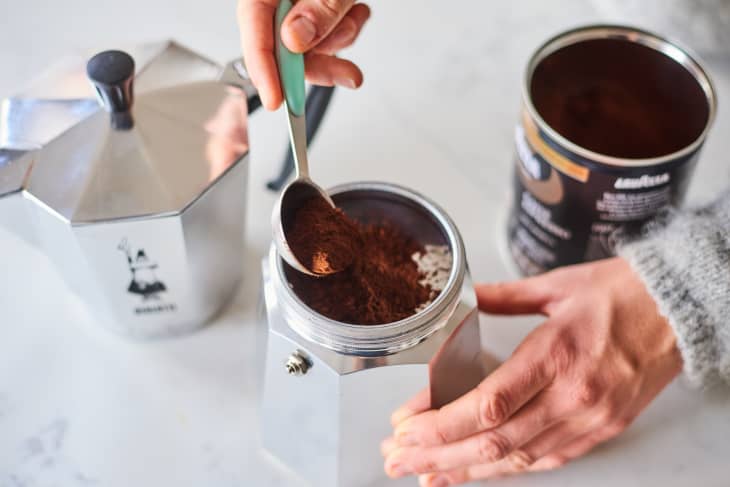I Make My Morning Coffee the Italian Way — And It’s Easier than Other Methods

There’s a moment every morning, between opening my eyes and bemoaning the end of bedtime, that I visualize my moka pot gushing fresh, strong coffee, just like it has been for 10 years, and I’m able to rise again. I know I’m not the only caffeine phoenix, but I haven’t met many people who use a moka pot, an Italian invention also known as a macchinetta. It seems Americans prefer other coffee-brewing methods these days.
Italians know a thing or two about coffee and design, so it makes sense that a sleek, simple stovetop pot is the most popular home-brewing device in Italy. Need me to back up for a second? The macchinetta is one of the OG coffee machines, invented in 1933 by Luigi De Ponti for Alfonso Bialetti. He got the idea at his local lake after observing women washing clothes with two buckets connected by a central pipe. Today, the Bialetti Moka Express can be found in practically every Italian household (and the MoMA). The Art Deco design and the rich brew have stood the test of time.
The mechanics are pretty simple. There are no cords or buttons to futz with or worry about. Water goes in the bottom and, when it boils, it generates steam, which forces the water up through the basket of grounds on top. The resulting brew falls somewhere between a French press and an espresso, sitting closer to espresso — that ultra-concentrated flavor, which sings in many delicious milk-based drinks. Add some warm milk for the closest latte you’ll get to a café’s without a fancy espresso machine. Cold milk and ice makes an iced coffee that’s richer, fresher, and more predictably caffeinated than cold brew.
Good coffee aside, once I realized how easy it was to use a moka pot, it became my brew method of choice. Take it from someone who can’t be bothered with expensive plastic pods, drippy paper filters, or precisely pouring 204-degree water from a gooseneck kettle. The moka pot process couldn’t be easier: Again, just add water, fill with coffee grounds, seal tightly, and let the whole thing sit over a medium flame. The cleaning process is simple too.
It’s also super-fast: My three-cup model takes no more than a few minutes to brew. It’s a good, quick, reliable brewing machine. In its decade of dedicated service, I’ve only had to replace the rubber gaskets that seal the top and bottom — just once, though, and I’ve had no other trouble since then. If you’re not convinced yet, this machine is so indestructible, Signore Bialetti used it as an urn for his ashes. While that feels very full-circle, I’ll reserve my moka pot for the grounds that keep me six feet above, so I can slay another day (the Italian way).
How do you make your coffee? Tell us in the comments below!